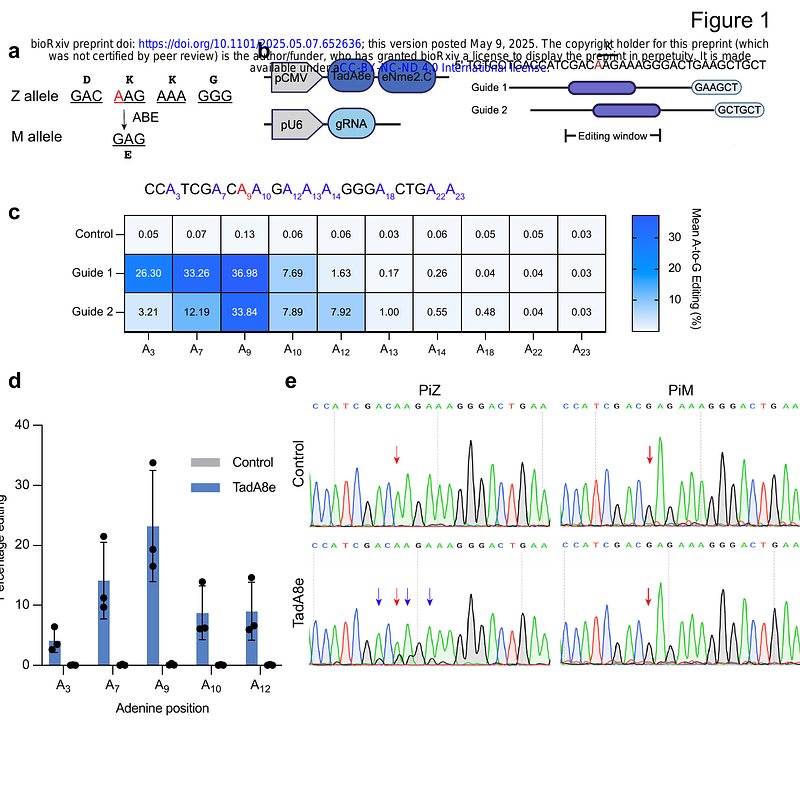A Compact Base Editor Rescues AATD-associated Liver and Lung Disease in Mouse Models

A Compact Base Editor Rescues AATD-associated Liver and Lung Disease in Mouse Models
Gao, J.; Bamidele, N.; Pires-Ferreira, D.; Destefano, A.; Tang, Q.; Cao, Y.; Xie, J.; Gao, G.; Gruntman, A.; Sontheimer, E.; Flotte, T.; Xue, W. J.
AbstractAlpha-1 antitrypsin deficiency (AATD) is commonly caused by a G-to-A mutation in the SERPINA1 gene (the PiZ mutation). The mutant PiZ AAT protein is sequestered in hepatocytes, causing lung emphysema due to insufficient AAT protein to inhibit neutrophil elastase in the lung. Here we show that a compact adenine base editor (ABE) with an evolved Cas9 nickase derived from Neisseria meningitidis (eNme2.C) can be packaged in a single AAV and correct the PiZ mutation in mouse models of AATD. An all-in-one eNme2.C-TadA8e/guide 2 plasmid achieved approximately 20% on-target editing in PiZ reporter cells. TadA9e, which has a narrower editing window than TadA8e, reduced bystander editing without significantly affecting the on-target edit. In PiZ transgenic mice, eNme2.C-TadA9e AAV showed approximately 23% editing efficiency after 8 weeks and reduced liver disease burden in treated mice. In a new AAT-null;PiZ transgenic mouse model, ABE restored serum levels of AAT to beyond the 570 ug/mL therapeutic level. Moreover, ABE treatment was able to significantly correct lung functions in AAT-null;PiZ animals with emphysema. This study demonstrates the feasibility of an eNme2.C-based ABE in a single AAV to treat both AATD-associated liver and lung disease.